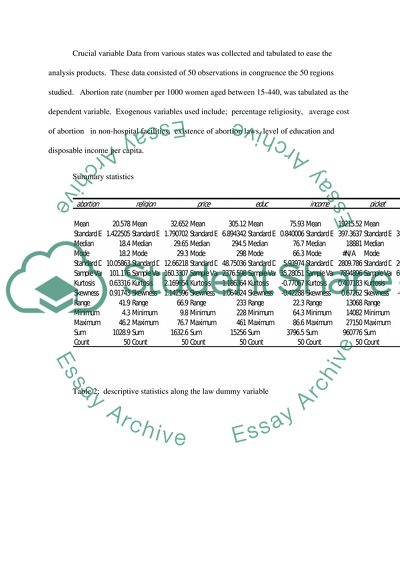Determinants of Abortion: Statistical Analysis Essay - 2. https://studentshare.org/macro-microeconomics/1859180-writer-decide
Determinants of Abortion: Statistical Analysis Essay - 2. https://studentshare.org/macro-microeconomics/1859180-writer-decide.


